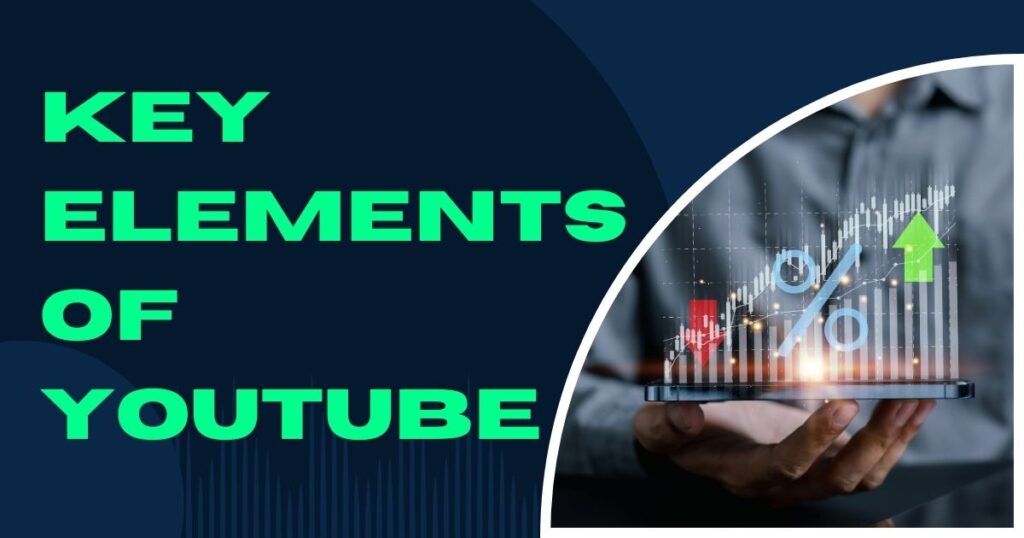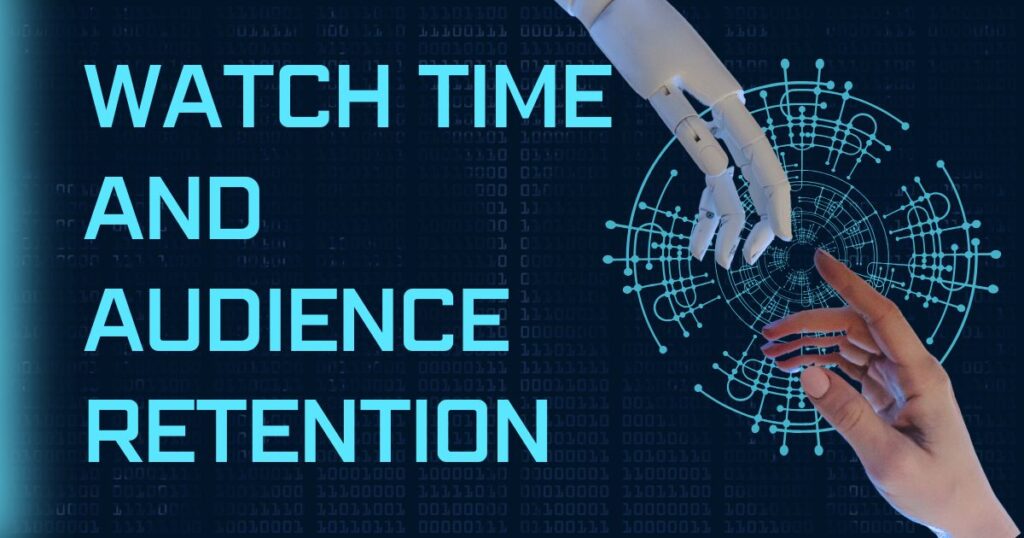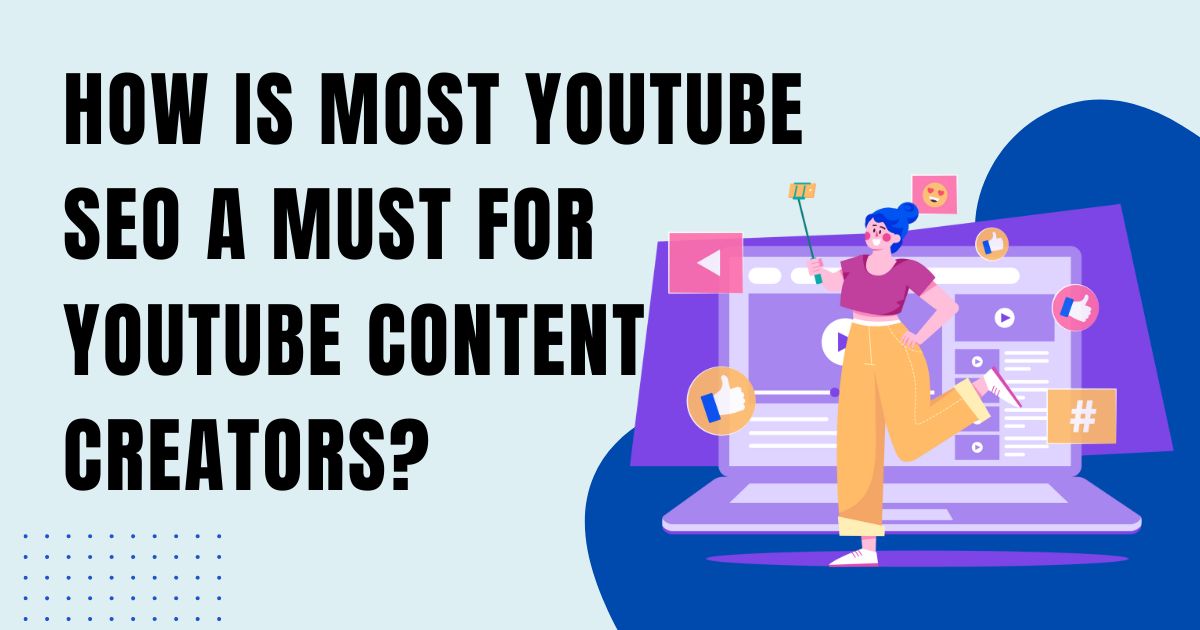As a YouTube content creator, the competition for views, subscribers, and attention on the platform is fierce. Every day, millions of videos are uploaded to YouTube, with countless new channels vying for visibility. With such a vast amount of content available, how do you ensure that your videos reach the right audience YouTube SEO (Search Engine Optimization) holds the key to the solution?
YouTube SEO refers to the strategies and techniques used to optimize video content so that it ranks higher on the platform, ultimately increasing visibility and attracting more viewers. SEO isn’t just important for Google search engines; YouTube is, after all, the second-largest search engine in the world, and it operates on a search algorithm very similar to Google’s. In this article, we will dive deep into why YouTube SEO is a must for content creators, the critical elements that contribute to SEO, and how you can leverage them to boost your channel’s growth.
Understanding the YouTube Algorithm
Understanding the YouTube algorithm is essential for creators looking to grow their channels. The algorithm determines which videos appear in search results, recommendations, and trending sections based on a combination of factors. Key elements include watch time, which tracks how long viewers stay engaged with a video, and click-through rate (CTR), which measures how many people click on a video after seeing its thumbnail. Engagement metrics, such as likes, comments, and shares, also signal to the algorithm that a video is valuable.
Additionally, relevance is crucial—videos that match a user’s search intent or browsing history are more likely to be recommended. Finally, user experience, such as video quality and viewer retention, plays a significant role in ranking. By optimizing these factors, creators can improve their chances of ranking higher in search results and recommendations, increasing visibility and attracting more views to their videos. Understanding these components is key to navigating YouTube’s complex algorithm.

Key Elements of YouTube
The key elements of YouTube SEO are essential for optimizing videos and improving visibility on the platform. These elements help videos rank higher in search results and attract more views. The main components include:
- Video Title: The title is critical for SEO and should contain relevant keywords that describe the content. It should be catchy, concise, and informative, ideally within 60 characters to avoid truncation.
- Video Description: The description provides more context about the video. Because they show up in search results, the first 100–150 characters are very crucial. Including keywords naturally in the description helps YouTube understand the video’s content.
- Tags and Keywords: Tags help YouTube categorize videos by relevant topics. Enhancing discoverability and assisting the algorithm in matching movies to the appropriate audience are two benefits of using both wide and particular tags.
- Thumbnail: A custom thumbnail attracts clicks by visually representing the video’s content. It should be engaging and aligned with the title to encourage views.
- Engagement: Likes, comments, shares, and subscriptions are important engagement signals that indicate a video’s quality and relevance, influencing its ranking on the platform.
By optimizing these elements, creators can improve their content’s performance on YouTube.
Why Video Engagement Matters
Video engagement is crucial for success on YouTube because it directly influences how the platform’s algorithm promotes content. High engagement—such as likes, comments, shares, and watch time—signals to YouTube that your video is valuable, leading to better rankings in search results, suggested videos, and even the trending page. Engagement also boosts watch time, which is a key factor in YouTube’s ranking system.
Videos with strong engagement foster a loyal community, increasing the likelihood of repeat views, subscriptions, and organic sharing. These interactions create a feedback loop that continues to expand your reach and visibility. Additionally, engaged viewers are more likely to subscribe, share, or take action on your CTAs, helping to grow your channel. Ultimately, high engagement not only improves video performance but also builds trust with your audience, enhancing long-term growth and content discovery. Without engagement, even the best videos can struggle to reach their full potential.

Watch Time and Audience Retention
Watch time and audience retention are two of the most important metrics for YouTube’s success, and they are closely linked to how YouTube’s algorithm ranks and recommends videos. Here’s why each of them matters and how they impact your channel’s growth
1. Watch Time
The entire amount of time users spend viewing your movies is referred to as watch time. It is among the most crucial YouTube ranking elements. The likelihood that your films will be suggested to new viewers by YouTube’s algorithms increases with the amount of watch time they get.
Why it matters
Mathematical Increase YouTube aims to increase user retention. If your video contributes to a longer session of watching, it gets prioritized in search results and recommendations.
- Channel Growth: More watch time means YouTube is likely to push your content to a broader audience, increasing your video’s visibility.
- Monetization: Higher watch time is essential for monetization eligibility (e.g., reaching 4,000 watch hours in the past 12 months for the YouTube Partner Program).
2. Audience Retention
Audience retention measures how much of your video viewers watch before they stop. It’s typically presented as a percentage showing how much of your video people watch on average. Videos that keep viewers engaged for a long time—especially up to the last few seconds—signal to YouTube that your content is valuable.
Why it matters
Engagement Indicator: High audience retention suggests that your video is compelling and relevant, encouraging YouTube to promote it further.
- YouTube’s Quality Signal: Videos with good retention rates are more likely to appear in suggested videos, search results, and the homepage. YouTube aims to suggest content that maintains viewer interest.
- Impact on Future Content: YouTube uses audience retention data to inform what kind of content is favored by viewers. If certain types of videos have higher retention, YouTube might recommend similar content to viewers, boosting your channel’s performance.
How to Improve Watch Time and Retention
To maximize both metrics, focus on creating content that
- Hooks viewers early: Start your videos with a strong, attention-grabbing intro to keep viewers watching beyond the first 15 seconds.
- Delivers value quickly Keep: Content engaging and ensure it delivers on the promise made in the title or thumbnail.
- Maintains viewer interest: Use editing techniques, visual variety, and storytelling to maintain attention throughout the video.
- Encourages viewers to watch more: Promote other videos on your channel using cards, end screens, and playlists to keep people watching more content.
Ultimately, both watch time and audience retention are about creating videos that people want to watch—and keep watching. The more you optimize for these metrics, the more likely your videos will be recommended by YouTube, helping your channel grow.

The Impact of External SEO
External SEO plays a crucial role in driving traffic to your YouTube videos from outside the platform, improving their visibility both on YouTube and across the web. By promoting your videos through social media, personal websites, blogs, and email marketing, you can attract new viewers who might not have discovered your content through YouTube’s search. Additionally, backlinks—links from other websites pointing to your videos—help boost your video’s authority, potentially improving its ranking in both Google search results and YouTube recommendations.
When videos receive media mentions or are shared on relevant websites and forums, it increases their reach and establishes credibility. External SEO also helps increase social proof, with shares and discussions driving more engagement, signaling to YouTube that your content is valuable. Ultimately, external SEO helps expand your video’s audience, increase engagement, and improve search rankings, all of which contribute to more visibility and growth for your YouTube channel.
Conclusion
YouTube SEO is essential for content creators who want to stand out and grow their audience. By focusing on key factors like video titles, descriptions, engagement, watch time, and external SEO, you can ensure that your content ranks higher and reaches more viewers. In a competitive platform like YouTube, SEO isn’t just a bonus—it’s a must. You can grow your YouTube channel and succeed in the long run with thoughtful optimization and well-planned content production.
 My Account
My Account 


